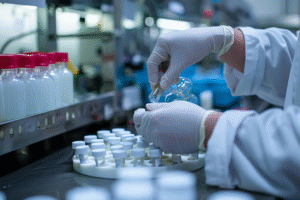Woolworths (ASX: WOW) Slips 15% After Profit Miss — Opportunity or Red Flag?
![]() Charlie Youlden, September 2, 2025
Charlie Youlden, September 2, 2025
Woolworths Stumbles in FY25: Setback or Buying Opportunity?
Woolworths (ASX: WOW) has long been seen as a reliable name on the market, but its FY25 results delivered a setback. Profitability fell short of expectations, and the share price dropped around 15 percent as investors reacted to weaker operating leverage and ongoing supply chain pressures flagged in the report.
Group sales still grew modestly, rising 3.6 percent to AUD 69.1 billion, with eCommerce standing out as a bright spot, up 17 percent year on year. The key question now is whether these challenges represent a structural weakening of the business model or a temporary headwind. For some investors, the recent sell-off may present an opportunity to re-enter at a discounted valuation if Woolworths can deliver on its strategy to stabilise margins and restore earnings growth.
What are the Best Consumer Staples Sector ASX Stocks to invest in right now?
Check our buy/sell tips
Top-Line Resilient, Bottom-Line Under Fire at Woolworths
Investors welcomed Woolworths’ stable top-line growth in FY25, supported by strong momentum in its eCommerce platform. Changing consumer behaviour continues to drive demand for online shopping, and Woolworths has responded with further investment in its digital capabilities, including website and app enhancements.
This strategy mirrors broader industry trends, with Coles also reporting solid growth in online sales. However, investor concern lies in the bottom line. Group EBIT declined 12.6 percent to AUD 2.75 billion, while net profit after tax fell 17.1 percent to AUD 1.39 billion. Margin compression was the central issue, driven largely by higher wages and superannuation costs across the supermarket network.
These additional expenses placed significant pressure on operating leverage, raising questions about how quickly Woolworths can restore profitability as it balances customer value initiatives with the rising cost of doing business.
Woolworths Bets Big on Supply Chain Overhaul — Short-Term Pain, Long-Term Gain?
Another major factor weighing on Woolworths’ margins in FY25 was the cost of supply chain commissioning. The group is in the midst of a multi-year investment program to modernise and expand its logistics network, with significant spending directed toward new distribution and fulfilment centres. A key example is the Moorebank Logistics Park in Western Sydney, which is designed to support more than 1,000 Woolworths stores across Australia.
Once fully operational, the facility will provide greater product range and improved availability, underpinned by advanced automation systems aimed at boosting efficiency and reducing long-term costs. While these investments have added near-term expense pressure, management views them as critical to strengthening Woolworths’ competitive position and delivering sustainable productivity gains. For investors, the question is how quickly these upfront costs will translate into improved returns and margin recovery.
Woolworths Builds Australia’s Largest Fresh Distribution Network
Woolworths is advancing a large-scale supply chain transformation aimed at improving efficiency and supporting long-term growth. Current projects include the construction of a multi-level chilled and fresh distribution centre at Eastern Creek, set to be the largest facility of its kind in the Southern Hemisphere. Spanning more than 93,000 square metres, it will handle up to 6,000 tonnes of fruit and vegetables weekly.
Alongside this, the group has recently opened the Moorebank National Distribution Centre and Auburn eCommerce fulfilment centre, while also commencing a AUD 900 million Sydney chilled and fresh facility and a new automated centre in Melbourne.
CapEx Steady at AUD 2.5b as Woolworths Lays Groundwork for Profit Rebound
Capital expenditure remained steady at around AUD 2.5 billion in FY25, contributing to near-term margin pressure. However, once these facilities are fully operational, Woolworths expects to reduce duplication, lower logistics costs per unit, and enhance stock availability, supporting stronger margins over the medium term.
The investor’s takeaway
For investors, we view Woolworths’ recent pullback as the result of near-term pressures rather than underlying structural weaknesses. The decline in profitability reflects the timing of significant investments in logistics and supply chain infrastructure. While these projects are weighing on margins today, they are designed to create long-term efficiencies, strengthen the company’s competitive position, and enhance customer experience across both stores and eCommerce.
Once these assets move beyond the commissioning phase, we expect Woolworths to benefit from improved productivity and reduced costs. Management has reiterated its confidence in achieving stronger profitability from FY26 onwards, which suggests that the current period may offer an opportunity for patient investors to look beyond short-term volatility and focus on the structural improvements being made.
Blog Categories
Get Our Top 5 ASX Stocks for FY26
Recent Posts
Cynata Therapeutics Completes Phase 2 Enrollment- Buy Before June or Wait for the Data?
Cynata Therapeutics (ASX: CYP) has completed patient enrollment in its Phase 2 clinical trial of CYP-001 for acute graft versus…
Neuren Pharmaceuticals (ASX:NEU) Gets FDA Approval- Is It a Buy?
Neuren Pharmaceuticals (ASX: NEU) rose 2.5% yesterday after the US FDA approved DAYBUE STIX, a new powder formulation of its…



